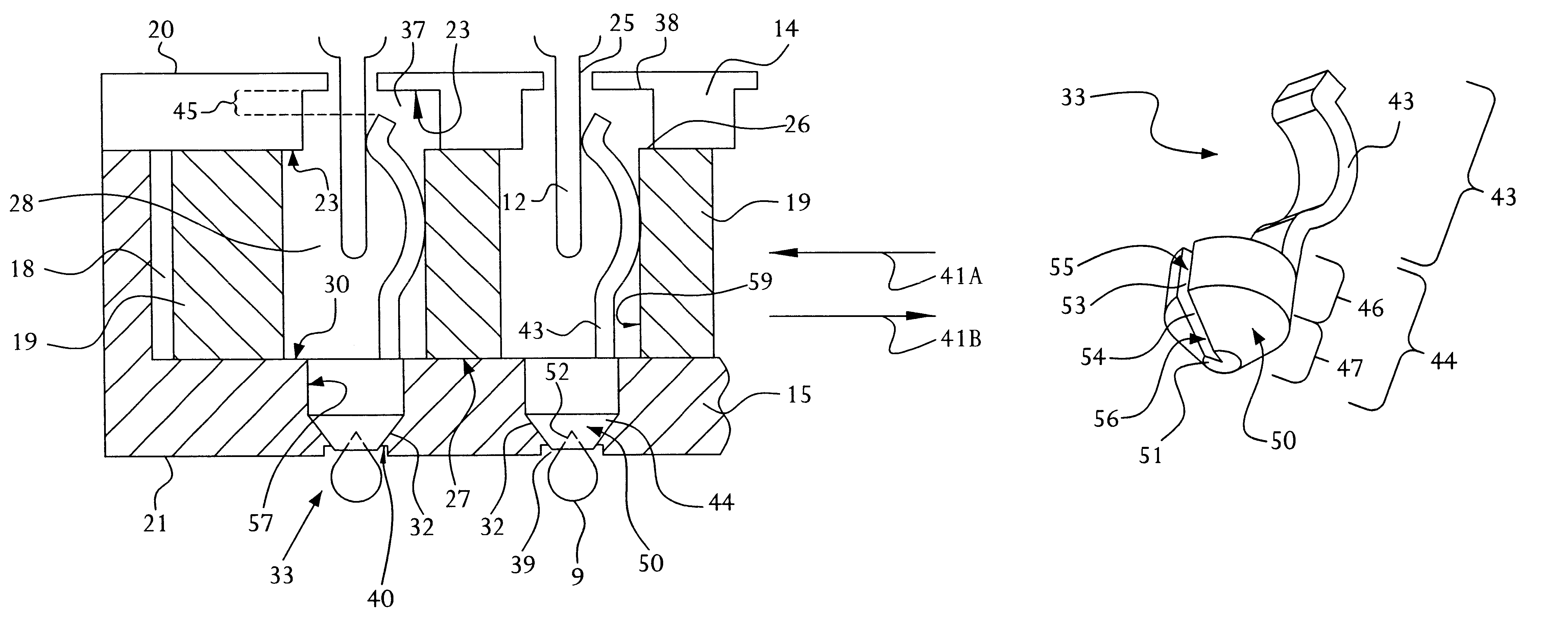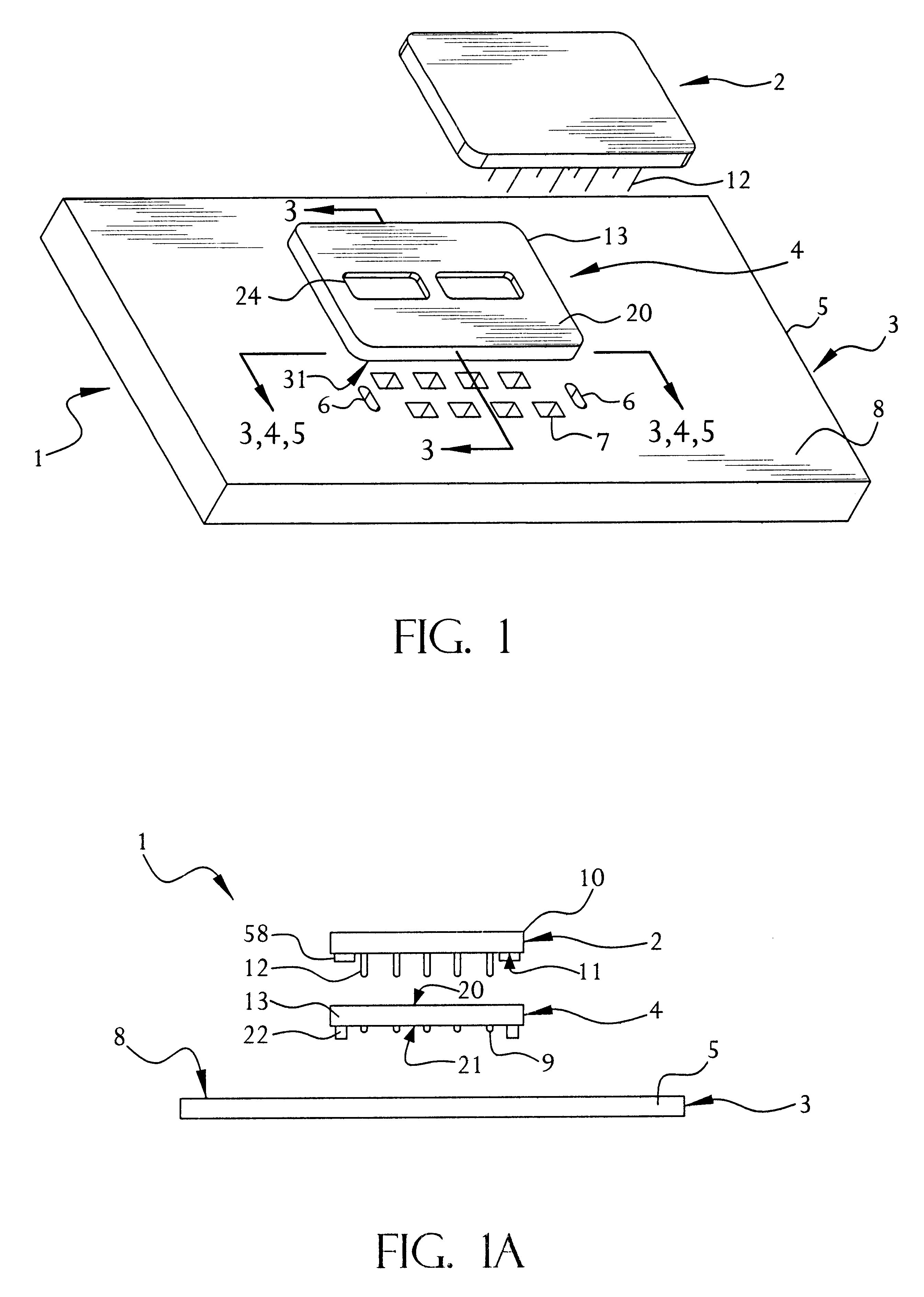Ball attached zero insertion force socket
a zero-inserting force, ball-attached technology, applied in the direction of fixed connections, coupling device connections, electrical apparatus construction details, etc., can solve the problems of bga damage, electronic component damage, or both, and it is extremely difficult to reliably mount on a pcb without damaging the bga, electronic component or both, damage or even destruction of components
- Summary
- Abstract
- Description
- Claims
- Application Information
AI Technical Summary
Benefits of technology
Problems solved by technology
Method used
Image
Examples
Embodiment Construction
The present invention is directed to an apparatus, system, and method for connecting an electronic component to a circuit substrate and forming an electrical connection therebetween using a substantially zero insertion force (ZIF) socket. The present invention provides for an improved, more compliant, and more reliable connection between the ZIF socket and the circuit substrate and ultimately between the circuit substrate and the electronic component. The improved connection is formed by a press-fit contact assembly that includes a novel configuration for anchoring the contact assembly to the ZIF socket. The contact assembly is adapted to prevent and / or reduce solder wicketing during solder reflow and therefore creates a more reliable connection between the ZIF socket and the circuit substrate. In addition, the present invention provides for an improved configuration for attaching a solder medium, such as a solder ball, to the contact assembly. The present invention improves solder ...
PUM
 Login to View More
Login to View More Abstract
Description
Claims
Application Information
 Login to View More
Login to View More - R&D
- Intellectual Property
- Life Sciences
- Materials
- Tech Scout
- Unparalleled Data Quality
- Higher Quality Content
- 60% Fewer Hallucinations
Browse by: Latest US Patents, China's latest patents, Technical Efficacy Thesaurus, Application Domain, Technology Topic, Popular Technical Reports.
© 2025 PatSnap. All rights reserved.Legal|Privacy policy|Modern Slavery Act Transparency Statement|Sitemap|About US| Contact US: help@patsnap.com



